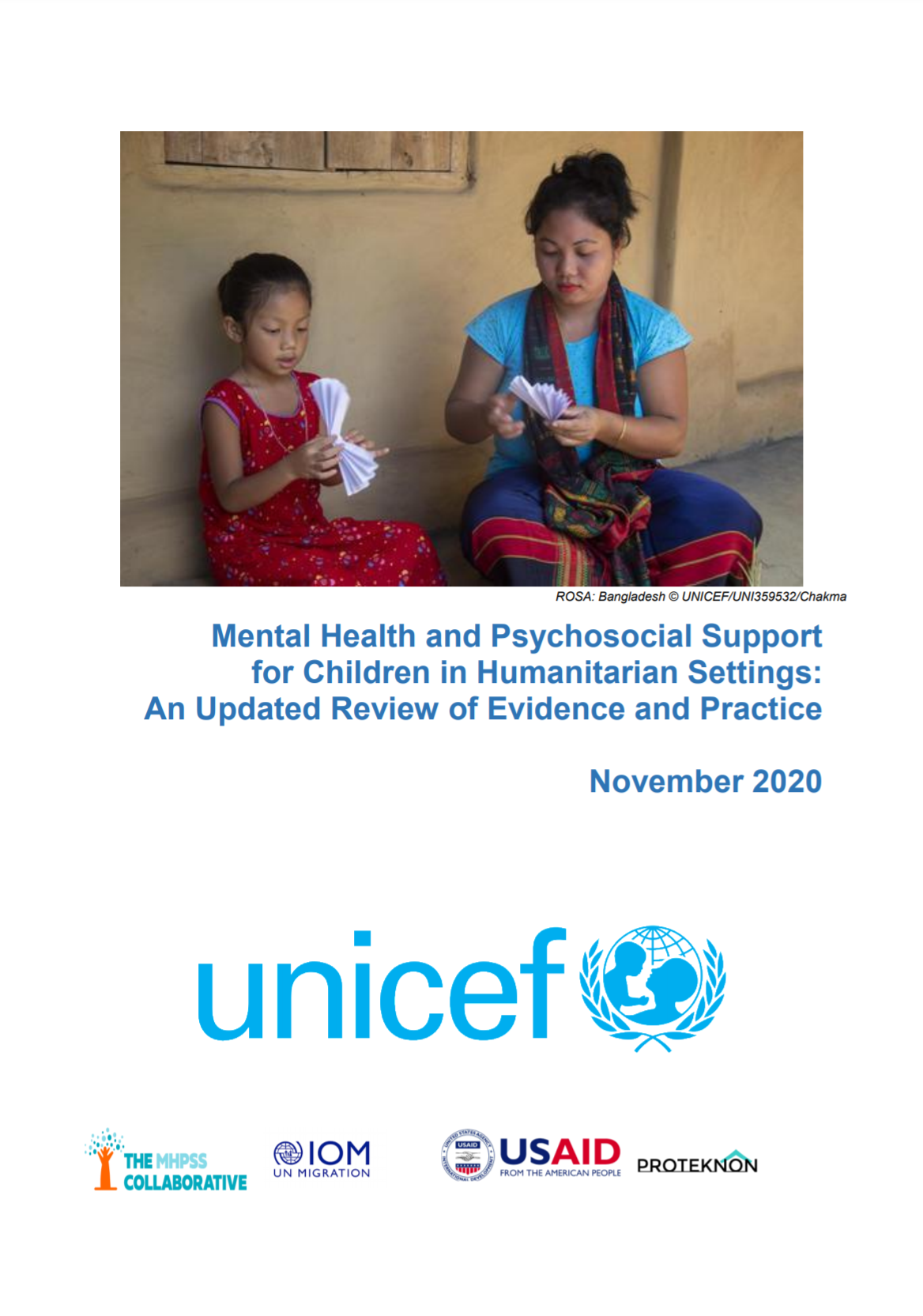
Study: Research
Mental Health and Psychosocial Support for Children in Humanitarian Settings: An updated review of evidence and practice
Publication year:
2021
English
Format:
Publisher:
UNICEF, United Nations Children's Fund
The escalation of conflicts and conflict-related displacement around the world has significant impacts on the development and overall well-being of children. Disasters and infectious diseases also disrupt lives and negatively affect the mental health and well-being of children and their caregivers. Different forms of humanitarian crises have adverse impacts on children and adolescent’s education, development, protection, and psychosocial well-being, while also negatively affecting the delivery of quality services and the social fabric of families and communities. The composite term mental health and psychosocial support (MHPSS) describes any type of local or outside support that aims to protect or promote psychosocial well-being and/or prevent or treat mental disorder. (IASC, 2007). Despite acute challenges, MHPSS practitioners and other sectoral staff integrating MHPSS approaches endeavor to bring high-quality interventions to scale in unstable environments. With an emerging evidence base for MHPSS interventions for children and families in humanitarian settings, we are better informed about how to best support children in programming interventions (Bangpan et al., 2017; Kamali et al., 2020; ODI, 2018; Haroz et al., 2020; Promundo & Sonke, 2018). Interventions such as Child-Friendly Spaces (CFS), school-based interventions, and psychological first aid for children, for example, have demonstrated feasibility and acceptability for scale-up in some post conflict settings (UNICEF, 2015a). However, huge gaps remain in knowledge and evidence. Increased efforts are required to ensure relevant, culturally appropriate interventions, as no “one size fits all” (Wessells, 2017).
The Interagency Standing Committee (IASC) MHPSS Guidelines in Emergency Settings guides humanitarian actors on how to reduce the risk of harm and respond appropriately to the different MHPSS needs that emerge in emergencies (IASC, 2007). One aspect of the Guidelines’ principle on ‘do no harm’ is that practitioners must stay “updated on the evidence base regarding effective practices.” This review provides practitioners with a review and update on effective practices and evidence in the field of MHPSS. It was first drafted in 2015, presenting evidence and practice specific to children in order to support the implementation of MHPSS activities in humanitarian settings. This updated 2020 Review includes recent evidence updates (2015-2020), and addressing an identified gap in the 2015 Review, includes additional evidence on child and community participation. It serves as a compilation of evidence and best practice around MHPSS for children in humanitarian settings and complements the UNICEF Guidelines on Community-Based Mental Health and Psychosocial Support in Humanitarian Settings: Three-tiered support for children and families (field test version) and Compendium of resources, a supporting document to UNICEF’s operational guidance: Community-based child protection.
Read full abstract
View & Download
Document information
Format
Content type
Rights
© Author/Publisher
Found a mistake? Help us improve!
If you have noticed a document assigned to the wrong author or any other inaccuracies, let us know! Your feedback helps us keep our data accurate and useful for everyone.
Share
Link
